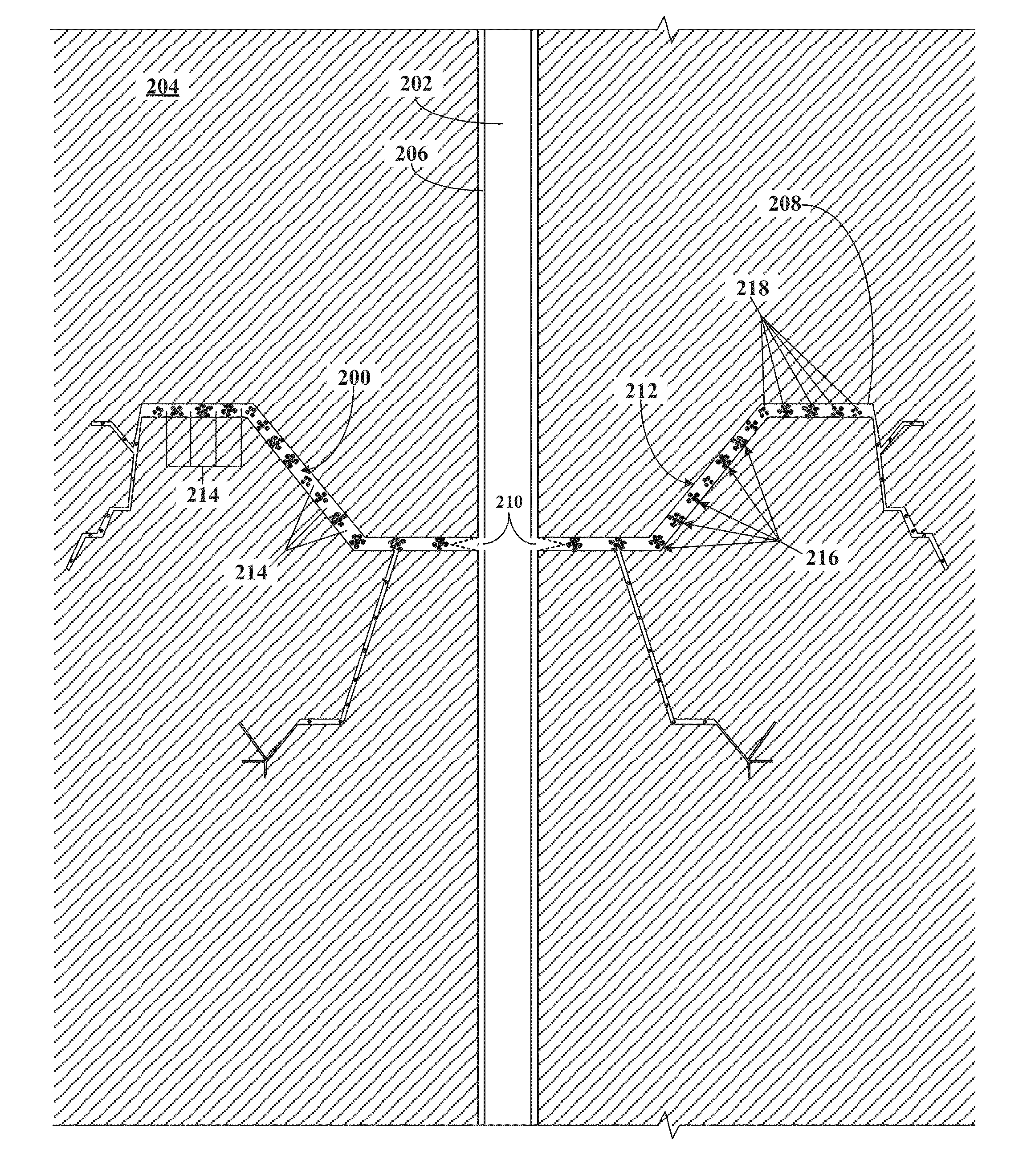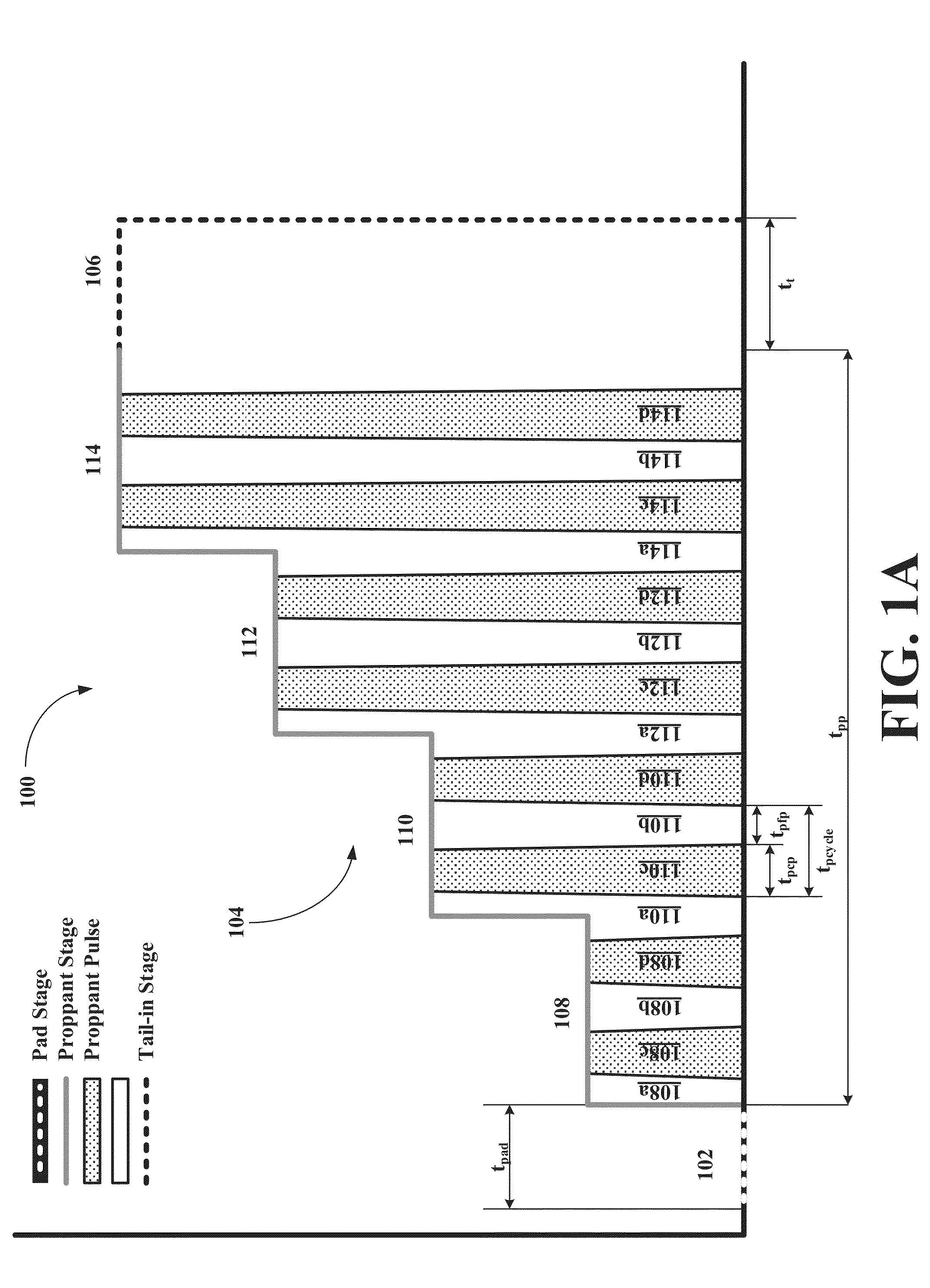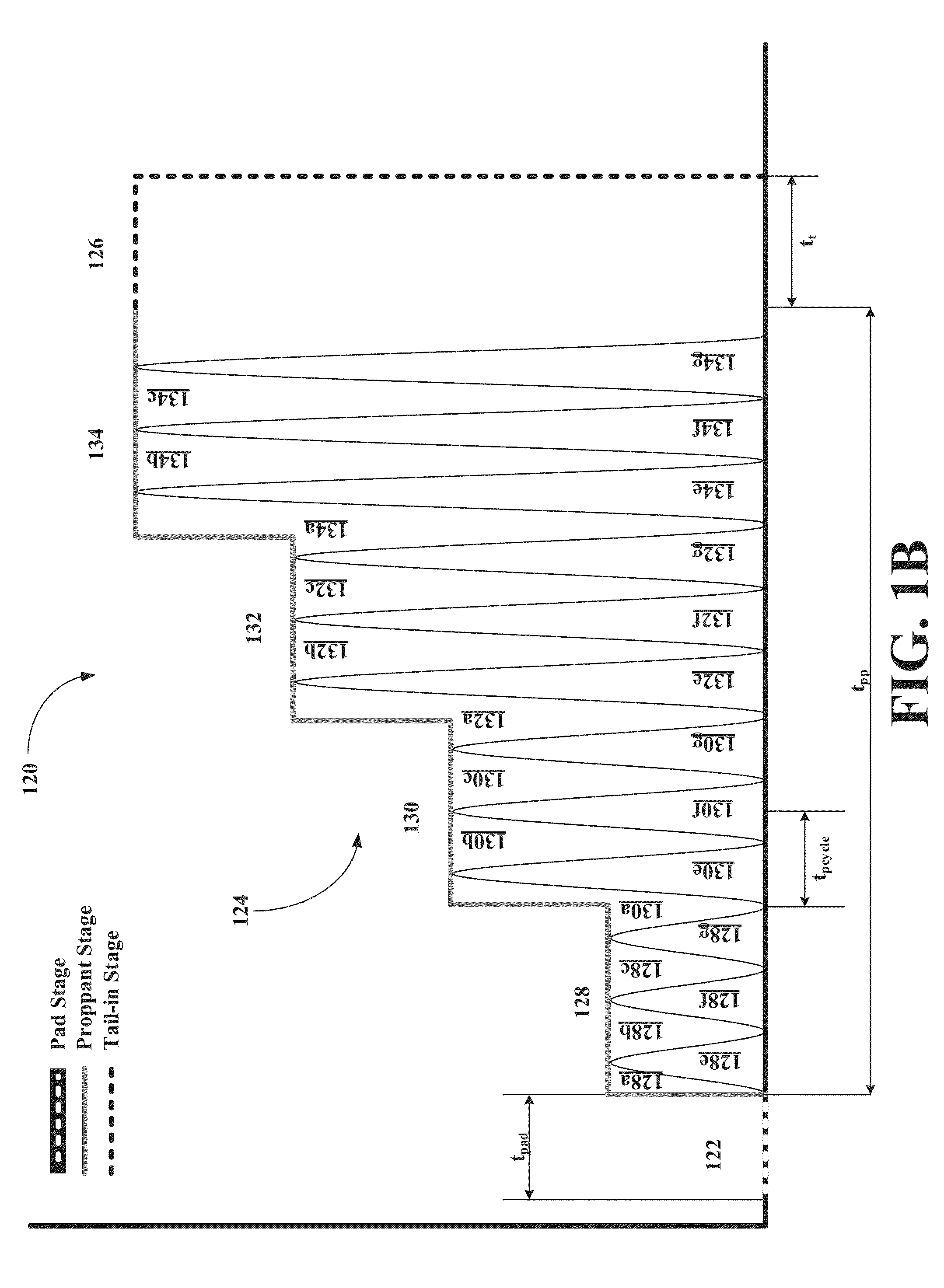Method to consolidate solid materials during subterranean treatment operations
- Summary
- Abstract
- Description
- Claims
- Application Information
AI Technical Summary
Benefits of technology
Problems solved by technology
Method used
Image
Examples
example 1
[0286]Referring now to FIG. 6, a table is shown that provides zeta potential ranges and corresponding aggregating propensities. Maximal aggregating potential or propensity is associated with zeta potentials between +3 mV and −5 mV; strong aggregating potential or propensity is associated with zeta potentials between −5 mV and −10 mV; medium to weak aggregating potential or propensity is associated with zeta potentials between −10 mV and −15 mV; a threshold aggregating potential or propensity is associated with zeta potentials between −16 mV and −30 mV; and low or little aggregating potential or propensity is associated with zeta potentials between −31 mV and −100 mV or lower.
[0287]FIG. 6 also includes experimental data of untreated silica and silica treated with the aggregating agent Sand Aid™, an amine-phosphate reaction product type aggregating agent available from Weatherford International, which forms a partial or complete coating on the silica altering the aggregating propensit...
example 2
[0288]This example illustrates the agglomeration of sand with Sand Aid and then consolidation with a ZnCl2 solution.
[0289]1.75 mL of Sand Aid™ (7 wt % w.r.t sand weight) was added to 25 mL of a 2 wt. % aqueous KCl solution containing 25 g of 200 mesh sand as shown in FIG. 7A. After stirring with a mechanical stirrer at 450 rpm for 1 minute, the sand clustered and turned brown in color due to the Sand Aid coating. The supernatant was decanted off to produce a first Sand Aid™ treatment. Add another 25 mL of a 2 wt. % aqueous KCl solution to the sand clusters and proceed to the second and third Sand Aid treatments. Later on, 25 mL of a 2 wt. % aqueous KCl solution was used to wash the Sand Aid™-coated sand in order to remove unreacted materials. The agglomerated sand looked like a soft touching, clay-like material as shown in FIG. 7B. To consolidate the texture of the agglomerated sand produced by the first treatment, 25 mL of a 2 wt. % aqueous ZnCl2 solution was subsequently added. Th...
PUM
 Login to View More
Login to View More Abstract
Description
Claims
Application Information
 Login to View More
Login to View More - R&D
- Intellectual Property
- Life Sciences
- Materials
- Tech Scout
- Unparalleled Data Quality
- Higher Quality Content
- 60% Fewer Hallucinations
Browse by: Latest US Patents, China's latest patents, Technical Efficacy Thesaurus, Application Domain, Technology Topic, Popular Technical Reports.
© 2025 PatSnap. All rights reserved.Legal|Privacy policy|Modern Slavery Act Transparency Statement|Sitemap|About US| Contact US: help@patsnap.com



